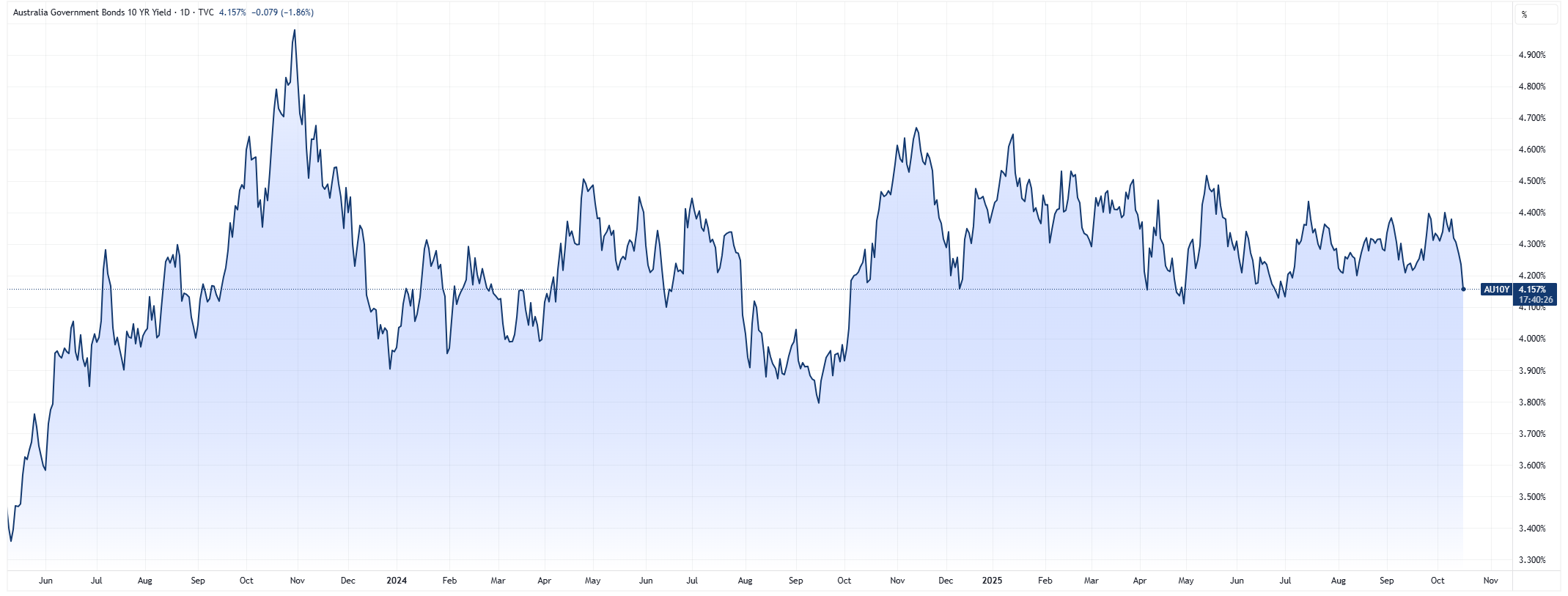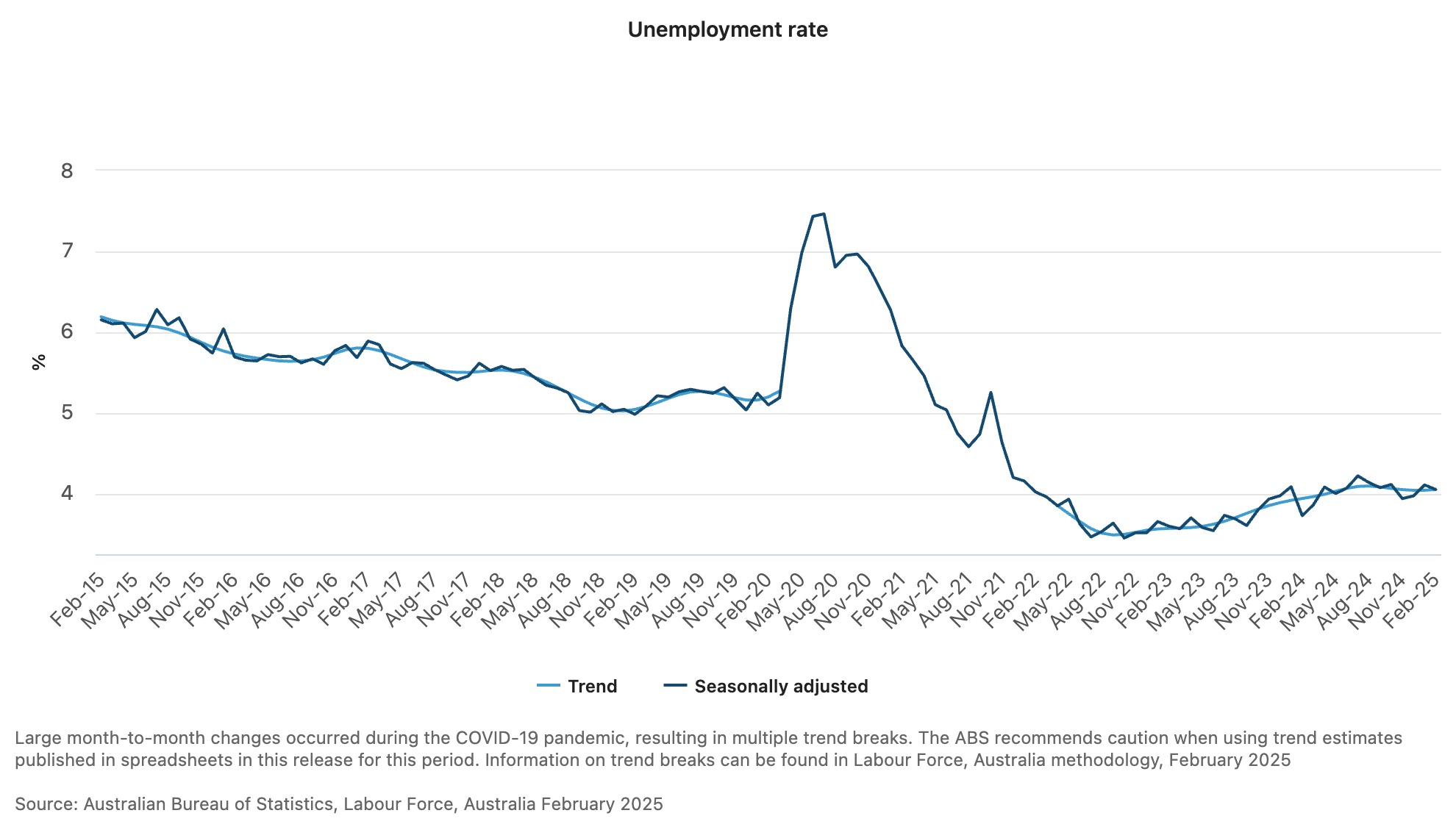
The Australian stock market has been on a remarkable run, with the S&P/ASX 200 index surging to an all-time high of over 9,100 points on October 16, 2025. This milestone comes at a time when the economy is showing signs of strain, particularly with the unemployment rate climbing to 4.5% in September—its highest level in nearly four years. Investors appear to be betting heavily on further monetary policy easing from the Reserve Bank of Australia (RBA), which has already implemented three rate cuts earlier this year, bringing the cash rate to 3.60%. The anticipation surrounding RBA Rate Cuts 2025 is driving much of this optimism, as softer labor market data suggests the central bank may need to act again to support growth.

Recent performance of the ASX 200 index, highlighting the record high amid economic shifts.
This paradoxical market behavior—stocks climbing while joblessness rises—highlights how financial markets often look ahead to policy responses rather than current conditions. With global uncertainties lingering, including U.S.-China trade tensions and fluctuating commodity prices, the ASX’s resilience is noteworthy. Gold miners and real estate stocks led the charge today, benefiting from lower rate expectations that make borrowing cheaper and boost asset values. As we delve deeper, it’s clear that the interplay between employment figures and central bank decisions is shaping investor strategies.
Unemployment Surge and Its Impact on RBA Rate Cuts 2025

Trends in Australia’s unemployment rate leading up to the recent spike.
The latest labor force data from the Australian Bureau of Statistics revealed an unexpected jump in the unemployment rate to 4.5% for September 2025, up from a revised 4.3% in August. This marks the highest reading since early 2022 and reflects a broader slowdown in job creation, with only about 12,900 net new positions added on average per month so far this year. The participation rate also edged higher as more people entered the workforce, but employment growth couldn’t keep pace, leading to increased idle labor.
According to article data from the Australian Bureau of Statistics, this weakening in the jobs market is putting downward pressure on wage growth and consumer spending, key drivers of inflation. For the RBA, which has been cautious about easing too aggressively amid persistent underlying inflation, this development could tip the scales. Money markets are now pricing in a 71% chance of a rate cut at the next meeting in November, with expectations for additional RBA Rate Cuts 2025 potentially totaling 50-75 basis points by year-end. Economists at major banks like ANZ and Commonwealth Bank have mixed views, with some holding off on immediate cuts but acknowledging the labor market’s strain as a pivotal factor.
This spike in unemployment isn’t isolated; it’s part of a broader economic picture where household caution persists despite a rebound in GDP to 1.8% annually, projected to reach 2.2% by the end of 2026. Global factors, such as improving prospects overseas offset by risks like U.S. tariffs, add complexity. If the trend continues, it could force the RBA’s hand, making RBA Rate Cuts 2025 a central theme for the remainder of the year.
Market Reactions and Expectations for RBA Rate Cuts 2025
The ASX 200’s record-breaking performance today, closing up 0.86% with strong gains in sectors like financials and property, underscores how rate cut bets are fueling equity markets. Standout performers included Hub24 Ltd, which jumped nearly 9%, reflecting broader sentiment in rate-sensitive areas. Gold stocks also shone brightly, hitting record highs amid commodity strength and a weaker Australian dollar, which fell following the jobs report.

Wave analysis of the ASX 200 index movements in early October 2025.
Investors are interpreting the weak employment numbers as a green light for more accommodative policy, with the ASX resetting its intraday high multiple times this week. The RBA’s recent signals, including comments from its chief economist on financial conditions loosening after prior cuts, suggest the bank is monitoring these developments closely. As of now, the ASX 30 Day Interbank Cash Rate Futures indicate around a 53% probability of a cut in November, though the latest data could shift that higher.
Looking beyond the immediate rally, sustained RBA Rate Cuts 2025 could bolster sectors like real estate and consumer discretionary, which have been hammered by higher borrowing costs. However, risks remain if inflation reaccelerates or global events disrupt commodity exports, a mainstay of Australia’s economy. The RBA’s Financial Stability Review earlier this month emphasized the system’s resilience amid uncertainty, but ongoing labor market softness might necessitate quicker action.
Looking Ahead: Economic Crossroads and Policy Paths
As Australia navigates this important juncture, with GDP growth picking up but employment lagging, the focus remains on how the RBA balances inflation control with economic support. The IMF’s recent outlook points to a global economy in flux, with potential U.S. policy shifts adding variables that could affect Australian tourists and trade.
In summary, the ASX 200’s record high amid an unemployment spike illustrates the market’s forward-looking nature, heavily influenced by prospects for RBA Rate Cuts 2025. While challenges persist, these dynamics could pave the way for a softer landing if policy adjustments align with economic needs. Investors and policymakers alike will be watching upcoming data releases closely to gauge the next moves.






